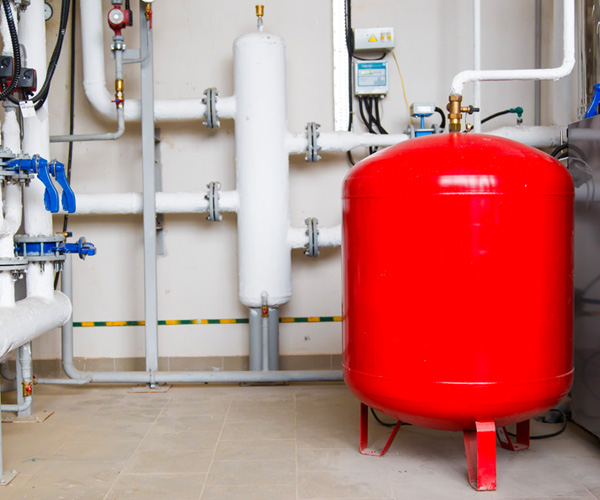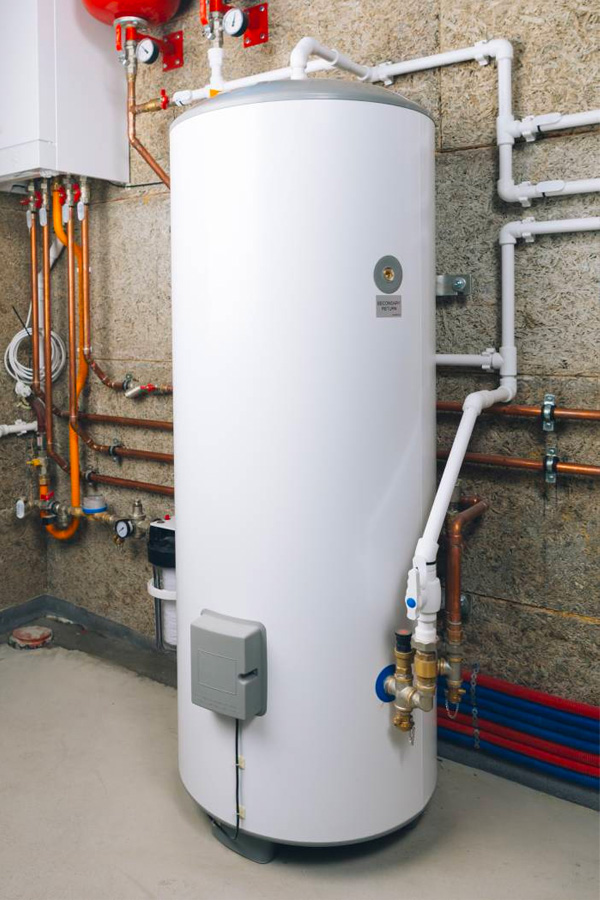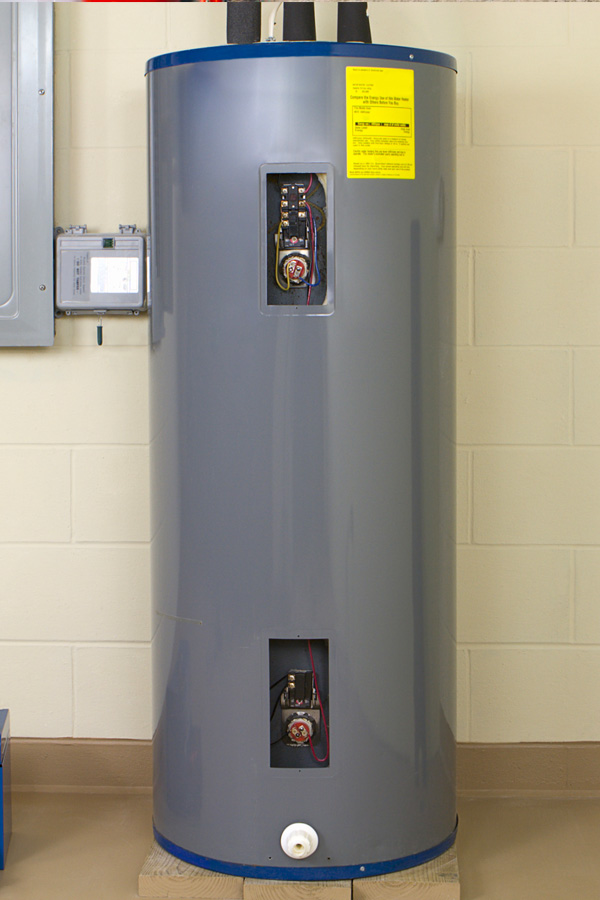
What a Boiler Does
A boiler sends hot water to radiators and water faucets. It both heats your home and provides hot water. This system combines the functions of a water heater and a furnace in one unit.

How a Boiler System Starts a Heating Cycle
A gas-powered boiler needs to be connected to the natural gas supply for a continuous source of fuel. It can also be connected to liquid petroleum gas cylinders that require regular refilling. When the thermostat triggers a heating cycle or you turn on the hot water faucet, a valve connected to the gas supply opens. The gas enters a sealed combustion chamber. An electronic igniter creates a spark or heats a filament that ignites the gas. Older boilers use a permanent pilot light to ignite the gas.
How the Gas Heats the Water in the Boiler
Hot jets connected to the boiler push water across the heat exchanger. An electric pump pushes the now-hot water into the radiator system. The hot water can also be pushed into the water taps if you turn on the hot water faucet.
Energy Efficient Condensing Process
Boilers manufactured in the past few years are condensing systems. Their heat exchanger setup captures almost all of the heat from the flue gases. The condenser recycles that heat from the steam. The heat is reused to heat the water that returns to the boiler from the radiators. This condensing process reduces energy wastage, lowers your home’s heating costs and decreases your home’s carbon footprint. Federal law requires that all new boilers use this condensing process.
How Combi Boilers Work
The processes of burning gas and sending water to the radiator and hot water taps is similar across all types of boilers. However, there are different types of boilers, and the specifics of how they do this vary a little. A combi boiler has two independent heat exchangers. One is for heating the radiators, and the other is for heating water for the faucets. It doesn’t require a hot water storage tank. The combi boiler is like an on-demand or tankless water heater plus a heating system. The water heating functions are independent of the home heating functions in a combi system.
How a Conventional Boiler Heats Water
A conventional boiler has a cold water tank and a hot water cylinder. The hot water cylinder stores hot water until you turn on a hot water tap. It’s like a conventional water heater with a storage tank. Conventional systems also have a feed and expansion tank. It’s designed to bring in cold water and maintain the right water level. The expansion tank is there to handle overflow because water expands in volume when it gets hot. The cold water tank is needed because some water will be lost from the system due to evaporation. The water main feeds the cold water tank. Once the supply of water in the hot water tank runs out, the cold water tank refills it. Conventional boilers can be paired with an immersion heater as a source of backup heating for hot water. The immersion heater will heat water in the tank in case the boiler malfunctions.

How System Boilers Work
A system boiler has an extra hot water tank. It doesn’t have a cold water tank. Cold water is pumped directly from the water main. These systems are sealed and pressurized. The water either goes to the hot water cylinder for storage or to the radiators. When you turn on a hot water tap, the hot water storage tank provides it.
Heatwave Heating & Cooling is the trusted provider of boiler system installations in Amherst and the surrounding areas. We also offer reliable furnace, heat pump and air conditioning maintenance, repair, replacement and installation services. Our water heater, ductless heating and cooling systems and air purification products and services are designed with your health, comfort and budget in mind. For more details about how boiler systems work for home heating, give us at Heatwave Heating & Cooling a call today.

